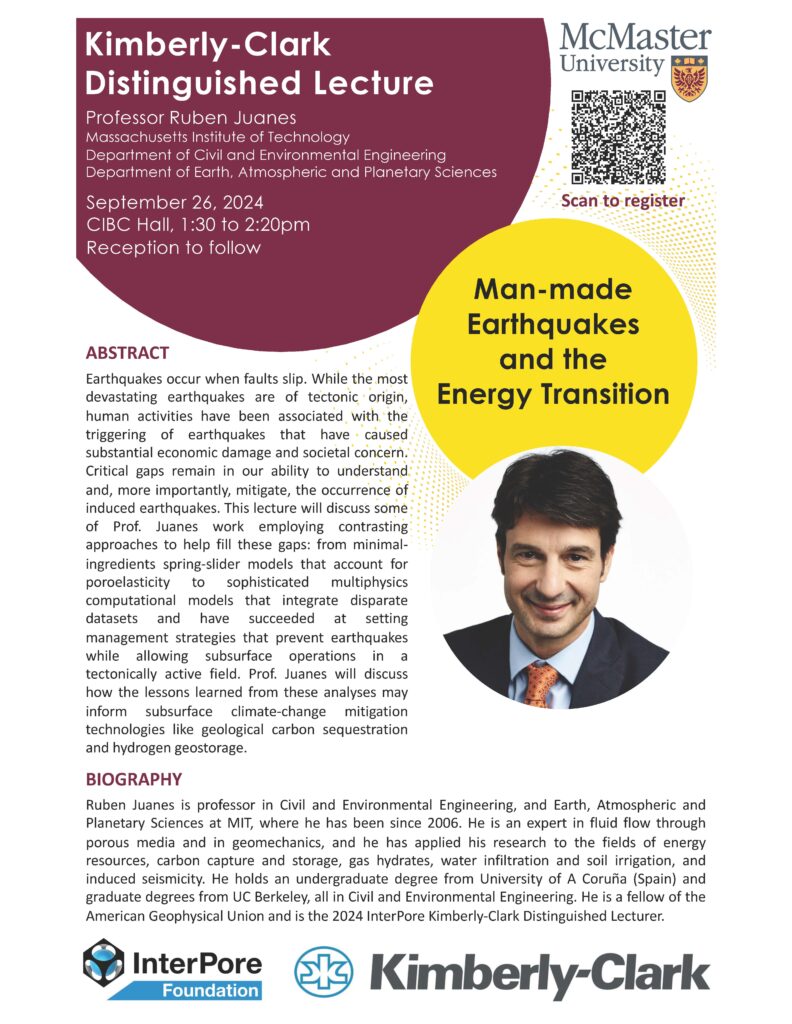Abstract
Earthquakes occur when faults slip. While the most devastating earthquakes are of tectonic origin, human activities have been associated with the triggering of earthquakes that have caused substantial economic damage and societal concern. Critical gaps remain in our ability to understand and, more importantly, mitigate, the occurrence of induced earthquakes. This lecture will discuss some of Prof. Juanes work employing contrasting approaches to help fill these gaps: from minimal ingredients spring-slider models that account for poroelasticity to sophisticated multiphysics computational models that integrate disparate datasets and have succeeded at setting management strategies that prevent earthquakes while allowing subsurface operations in a tectonically active field. Prof. Juanes will discuss how the lessons learned from these analyses may inform subsurface climate-change mitigation technologies like geological carbon sequestration and hydrogen geostorage.
Biography
Ruben Juanes is professor in Civil and Environmental Engineering, and Earth, Atmospheric and Planetary Sciences at MIT, where he has been since 2006. He is an expert in fluid flow through porous media and in geomechanics, and he has applied his research to the fields of energy resources, carbon capture and storage, gas hydrates, water infiltration and soil irrigation, and induced seismicity. He holds an undergraduate degree from University of A Coruña (Spain) and graduate degrees from UC Berkeley, all in Civil and Environmental Engineering. He is a fellow of the American Geophysical Union and is the 2024 InterPore Kimberly-Clark Distinguished Lecturer.

